How to clean a Dyson vacuum
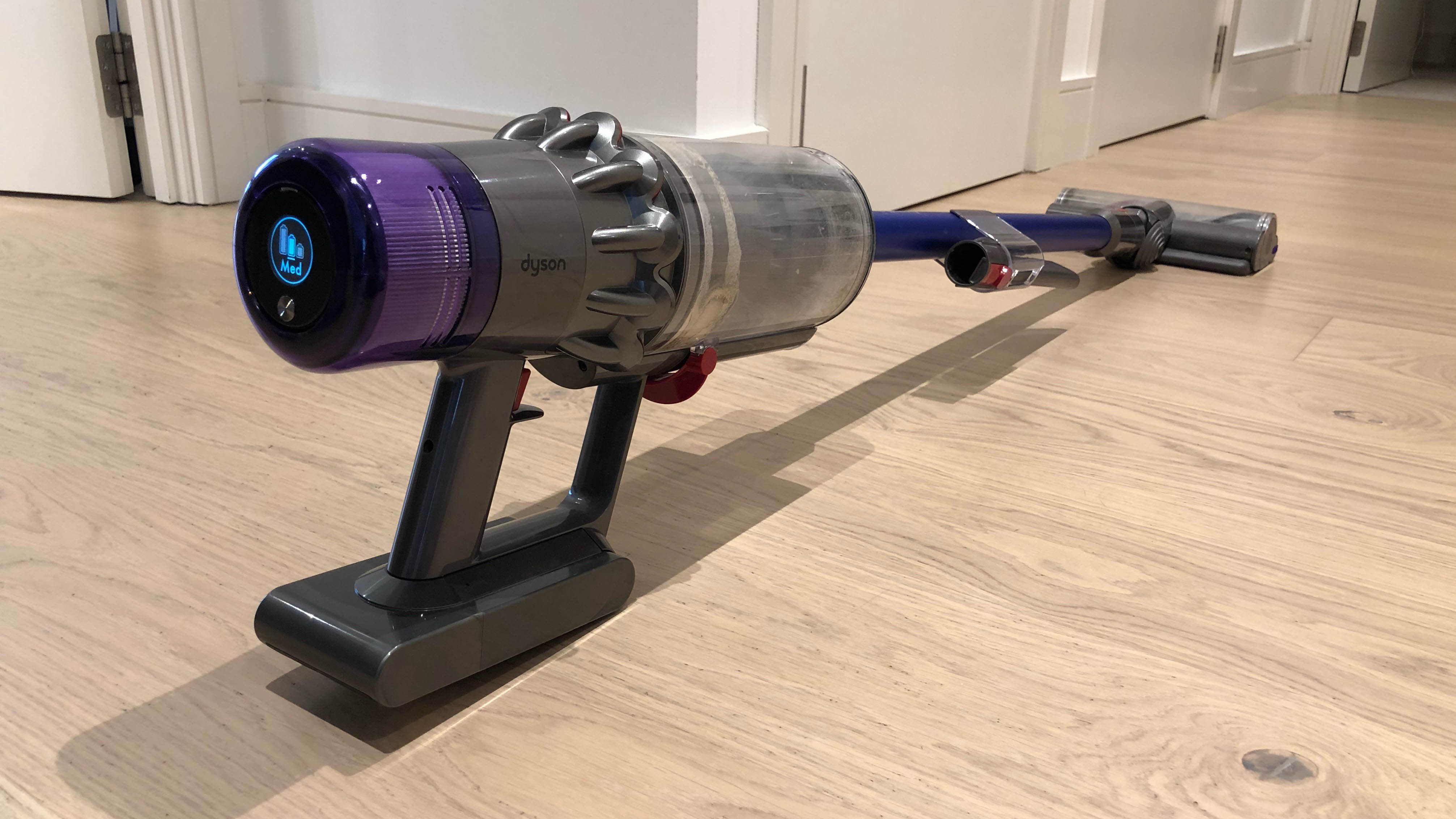
Knowing how to clean a Dyson vacuum can get your trusted cleaner running more efficiently, and prolong its life. As with most cleaning appliances, the best vacuum cleaners need a bit of TLC for top results.
If you don’t take the time to clean your Dyson, you will notice the effect on its performance. The suction and general pick-up will start to lag. Your vacuum might also struggle to vent, causing it to make a strange noise or even cut out completely.
Luckily, it's an easy task to do, and won't take any time at all. So whether you own a stick, cylinder or upright model, here's exactly what you need to do to clean your Dyson vacuum.
Ever wondered what Dyson vacuum cleaner do you own? Here’s why it’s good to know. If you're looking to upgrade, these are 5 things to look out for before buying a Dyson vacuum cleaner.
How to clean a Dyson vacuum
• Microfiber cloth
• Dish soap
• White distilled vinegar (optional)
• Scissors
1. Unplug the appliance — Safety fist, make sure you’ve unplugged the appliance if necessary.
2. Empty the canister — Remove the dust canister as you usually would once it’s full and empty out any remnants. Dyson vacuum cleaners are all bagless, so do this outside if possible to prevent allergies and a mess. Be sure to give the canister a thorough shake and hook out any visible blockages.
Most cordless models' canisters can be released using a red trigger/button found near the handle, but refer to your manual if you’re unsure.
Get instant access to breaking news, the hottest reviews, great deals and helpful tips.
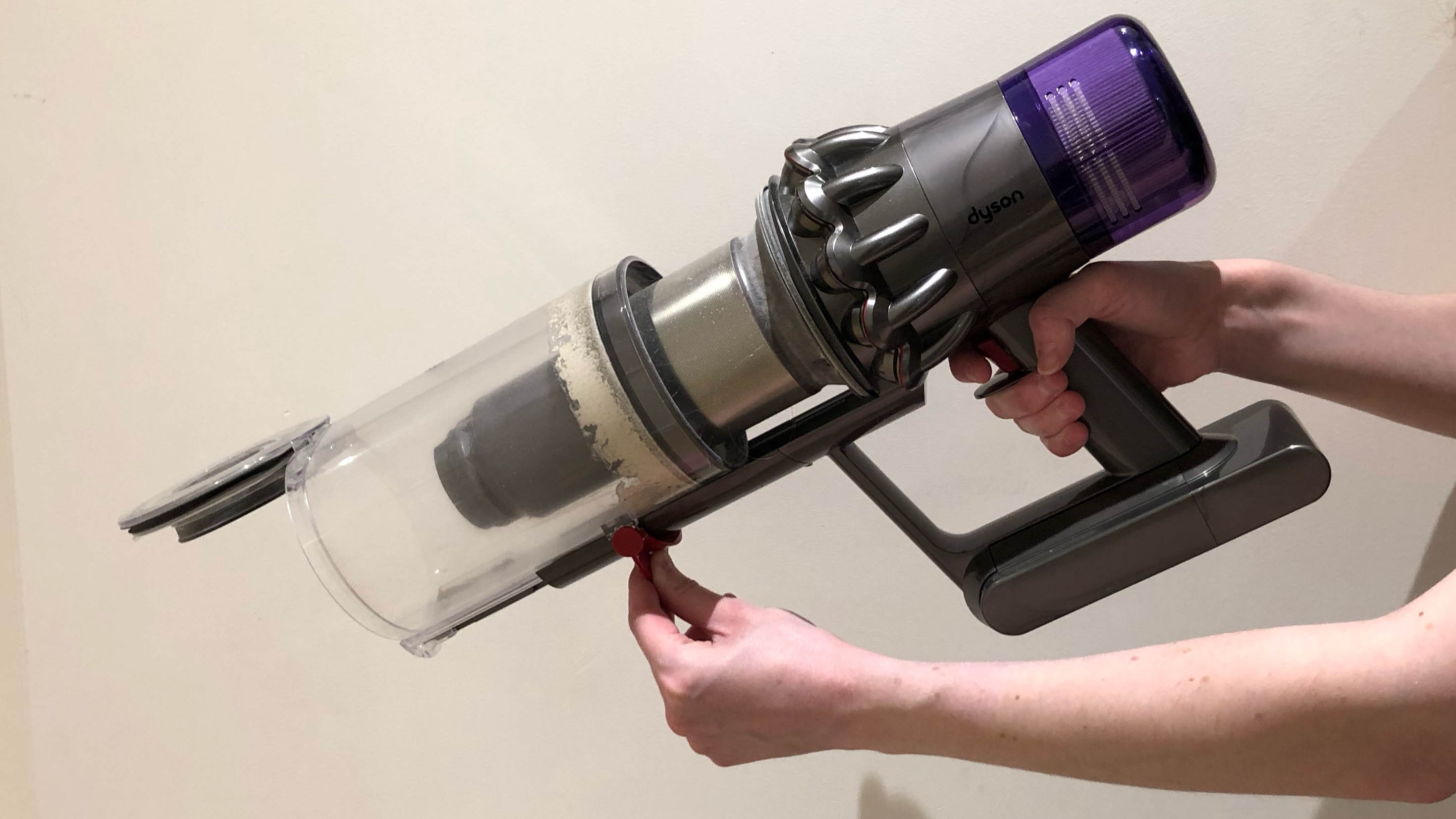
3. Wash and clean the canister — Now you can give the inside of the canister a clean using a damp microfiber cloth. Do not submerge the canister in water and do not use detergent or any cleaning chemicals. You can, however, use compressed air to reach any awkward crevices, but be sure to do this outside.
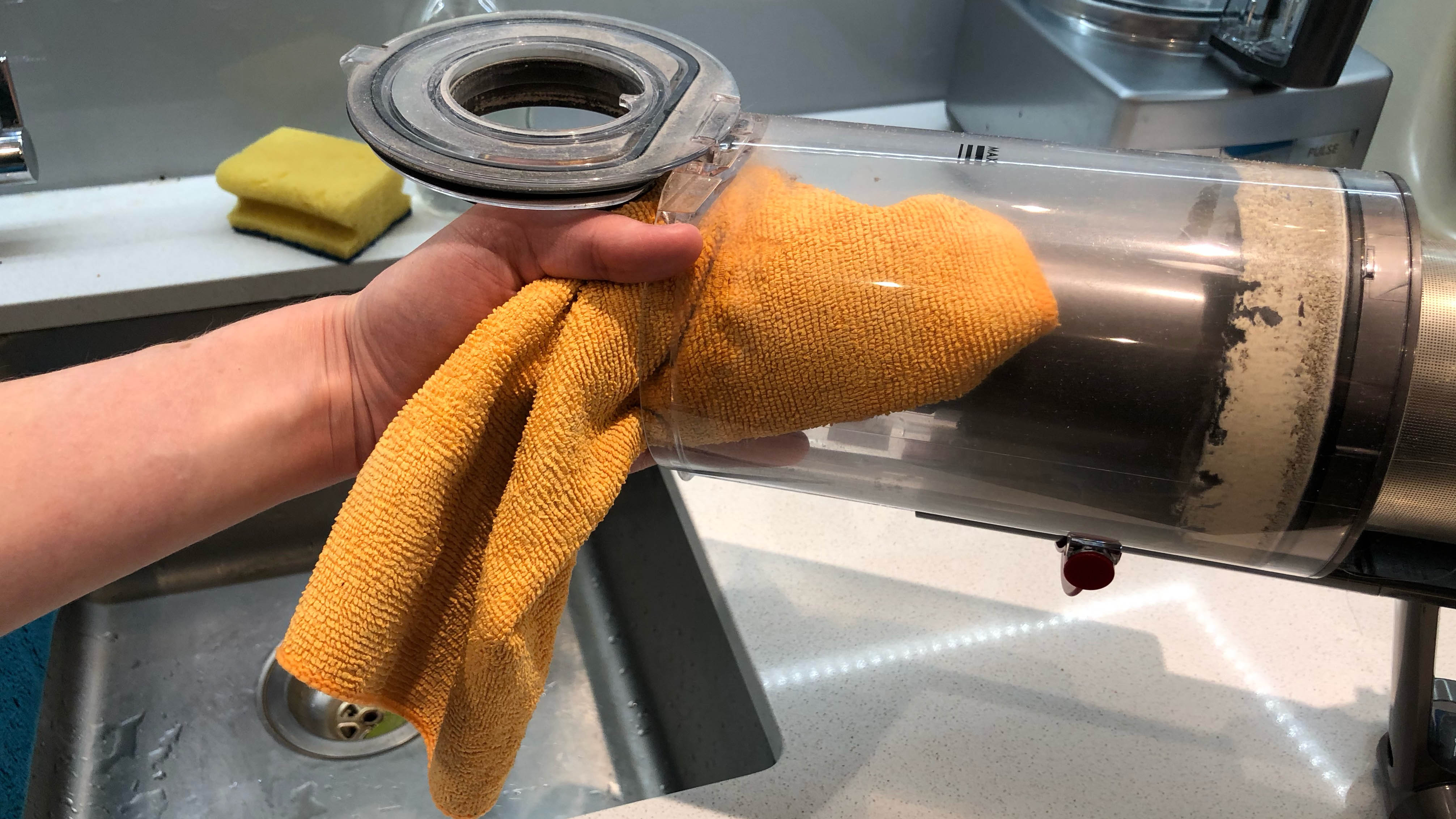
4. Remove the filter — While the canister is drying, it’s time to tackle the filter. Your vacuum filter is an important component — it essentially captures any large particles, such as dust and pollen, and contains them within your vacuum to protect the motor and to stop them from being released into the air. With regular use, this filter will inevitably get covered and blocked with dust and will need to be cleaned.
The filter can usually be found on the end nearest the handle if you’re using a cordless model. If you own an upright model, there’s usually one on top of the canister and sometimes a second one in the ball of the floor head — both will need cleaning. A canister model's filter is found in the top of the dustbin. If you’re unsure, refer to your manual.

5. Wash the filter and leave to dry — Once separated, carefully take the filter outside and remove any immediate dust over a bin — you can gently tap it to detach the majority. Once you’ve done this, bring the filter indoors and rinse it under cold, running water, rubbing it gently by hand to remove any final dust.
Now, fill it with warm water, cover the openings with your hands and gently shake it to give it a final rinse. Tip out the water, and repeat until the water runs clear. Then shake the filter to remove the excess and leave out to air-dry for at least 24 hours. Make sure the filter’s completely dry before you replace it.
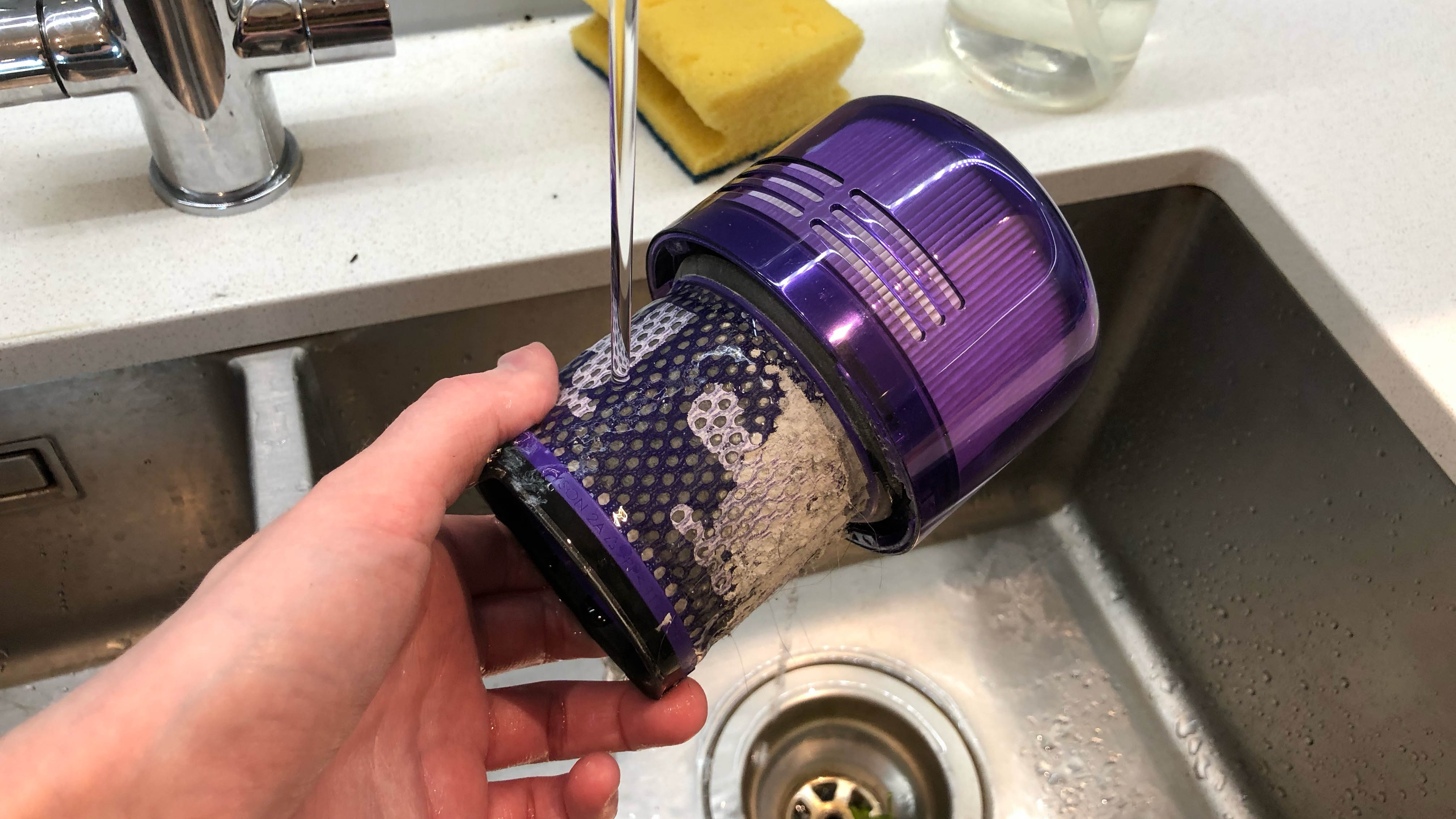
6. Untangle the brush roll — Now it’s time to take care of any long hairs which have wrapped around the brush roll. Take a pair of scissors (ideally manicure scissors) and cut along the bar to remove them. Be sure not to pull or force any hairs free as this could damage the vacuum. Be careful not to damage the bristles as you trim either.
On some Dyson vacuum cleaners, you may need to remove the soleplate to access the brush roll. You can do this using a flat head screwdriver or a coin. Just be sure to keep the screws safe in the meantime. You should use a damp microfiber cloth to clean the brush roll compartment while you’re here.

7. Check the hose for blockages — If your Dyson vacuum has suddenly stopped playing ball, you might be dealing with a blockage. Remove the hose and inspect it to see if that’s the case. If you’ve got something long and thin, such as a mop handle, you can push it through to clear a blockage.
Failing that, you can soak the hose for 10 minutes in warm water combined with some white distilled vinegar before rinsing. This should dislodge the blockage. Leave it out to dry completely.
If you have a stick vacuum, it’s also worth checking the hole between the canister and the hose to make sure that’s not blocked.
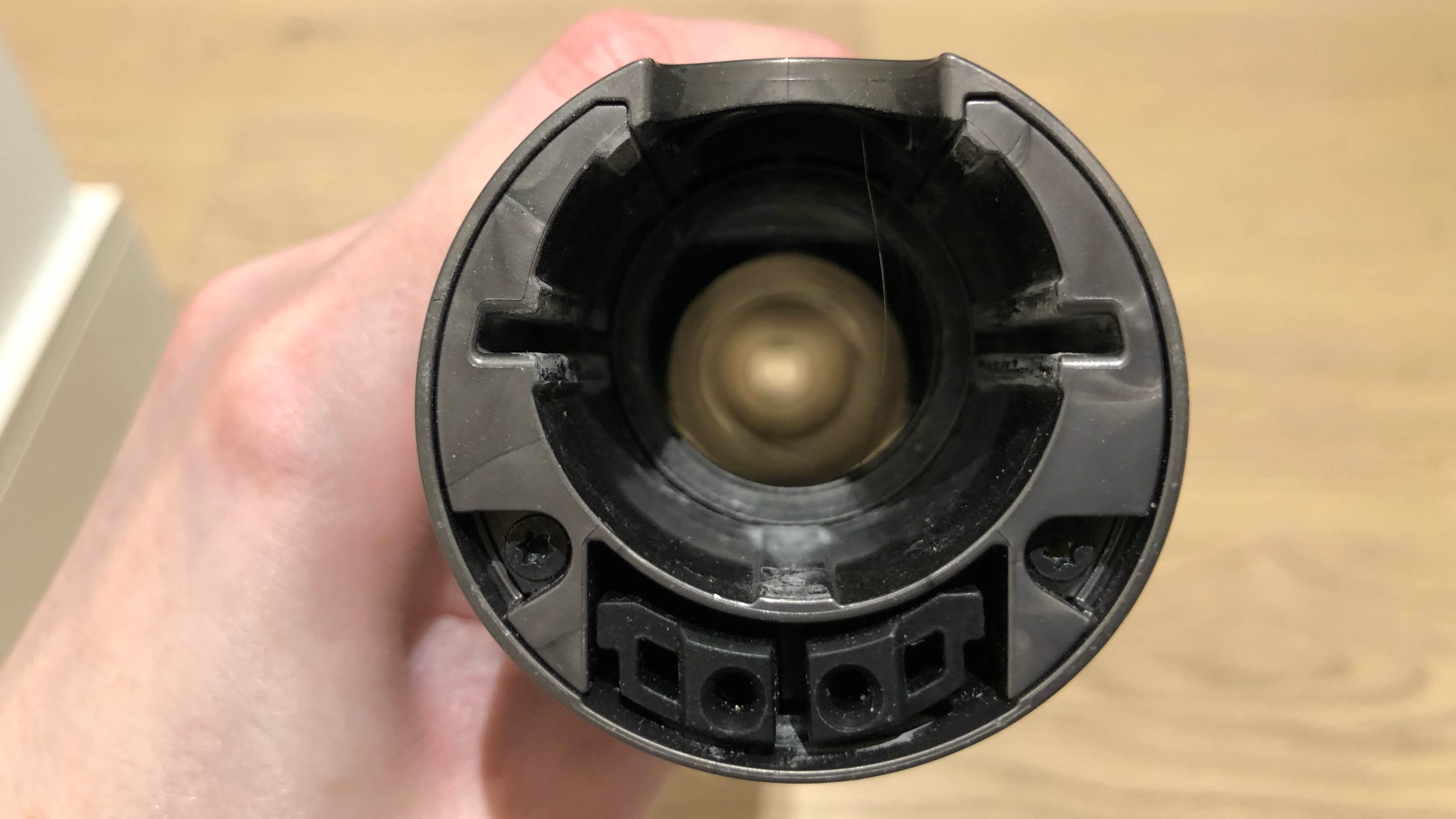
8. Clean the attachments — Don't forget to give your attachments a once-over as well. If you often use your crevice tool or mini motorized tool, then those will need looking over.
Remove any immediate dust and trapped hairs from the tools, either by hand or like you did with the main brush roll. Then wipe down the attachments with a damp microfiber cloth.
9. Wipe down the exterior — As a final touch, wipe down the exterior of your Dyson vacuum using a damp microfiber cloth.
10. Leave everything to dry then reassemble — Give everything at least 24 hours to dry before you reassemble.
And that’s it — your Dyson vacuum cleaner should be ready to run again. Remember to keep on top of its maintenance over time.
How often should I clean my Dyson vacuum?
The filter should be cleaned once a month for general guidance, but this depends on how often you use your vacuum cleaner. Some of the more advanced Dyson stick vacuums even contain sensors which will tell you when it’s time to clean the filter via the display.
The rest of the Dyson vacuum should be cleaned as and when required. Make sure you empty the canister as soon as it’s full so it doesn’t form a blockage. If you notice your vacuum stops working even though the canister is empty, that’s another sign that it needs a clean.
What causes a Dyson to lose suction?
It’s quite easy to tell when your Dyson has lost suction; it will struggle to pick up debris from the floor, perhaps accompanied by a strange noise. Using your Dyson in such a state will be counterproductive, so you need to find the source of this problem. There are several factors that can contribute. The most obvious reason is that your canister is full — if you’re not used to using cordless models, this can happen faster than you know. Take a look at your canister and empty it if necessary.
A hidden blockage could also cause your Dyson to lose suction. Take your vacuum apart piece-by-piece, inspecting each until you find the location of the blockage. If it’s in the hose, which is pretty common, you will have to fish it out with something long and thin, or otherwise soak this part.
A dirty filter can reduce the suction of your Dyson as well. This is because it can no longer vent the air through as efficiently. For guidance on how to clean this, follow steps 4-5 above. Dyson recommends cleaning its vacuum filters once per month, but you will need to clean it as often as required depending on use. Some of the more advanced models will even stop running and inform you if the filter needs to be cleaned.
Looking for more cleaning tips? Check out our guides on how to clean a glass shower door, as well as how to clean a washing machine and how to wash a pillow.

Katie Mortram used to be a Homes Editor for Tom's Guide, where she oversaw everything from kitchen appliances to gardening tools, as well as smart home tech. Specializing in providing expert advice for cleaning and home manintenance, she now works as Household Advice Editor for Good Housekeeping.
